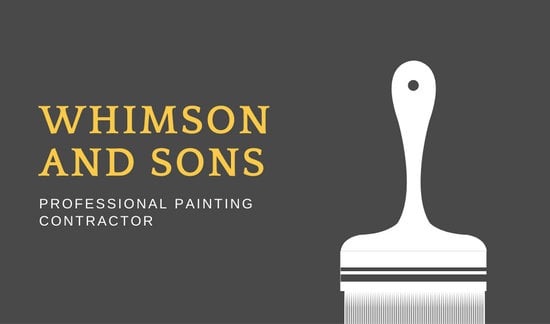Discover The Methods Which Seasonal Factors Can Affect The Success Of Business External Painting And Determine The Best Times To Achieve Enduring Results For Your Job
Discover The Methods Which Seasonal Factors Can Affect The Success Of Business External Painting And Determine The Best Times To Achieve Enduring Results For Your Job
Blog Article
Personnel Author-McLamb Whalen
When you're intending a business external painting job, seasonal variables can make or damage your results. You'll intend to consider exactly how temperature level and moisture influence paint application and drying times. Choosing the best season can guarantee your paint sticks properly and lasts longer. However which periods are really the best for this kind of job? Let's check out the crucial elements that can impact your project's success.
The Impact of Temperature on Paint Application
When you're preparing a commercial external painting task, the temperature level can substantially influence how well the paint sticks and dries.
Ideally, you want to repaint when temperatures range between 50 ° F and 85 ° F. If it's too chilly, the paint might not cure appropriately, causing issues like peeling off or fracturing.
On the flip side, if it's too warm, the paint can dry out also swiftly, stopping correct attachment and resulting in an irregular finish.
You ought to also think about the time of day; early morning or late afternoon supplies cooler temperatures, which can be extra beneficial.
Constantly check residential painting services minneapolis, mn for the details paint you're making use of, as they usually offer guidance on the suitable temperature level array for optimal outcomes.
Moisture and Its Effect on Drying Times
Temperature isn't the only ecological variable that influences your commercial external paint task; humidity plays a significant role as well. https://jaidentzeib.blogripley.com/35020146/tips-for-preparing-your-home-before-professional-home-painters-get-here can decrease drying out times dramatically, affecting the general quality of your paint work.
When the air is saturated with moisture, the paint takes longer to treat, which can result in problems like poor attachment and a greater threat of mold growth. If you're painting on a particularly damp day, be planned for extensive delay times between layers.
It's crucial to monitor neighborhood weather conditions and plan as necessary. Preferably, go for humidity levels between 40% and 70% for ideal drying out.
Maintaining these consider mind guarantees your task stays on track and delivers a long lasting surface.
Best Seasons for Commercial Outside Painting Projects
What's the best season for your industrial exterior paint projects?
Spring and very early autumn are commonly your best options. During these periods, temperatures are mild, and moisture degrees are frequently lower, developing ideal conditions for paint application and drying out.
Avoid summer season's intense heat, which can cause paint to completely dry as well swiftly, bring about poor adhesion and finish. In a similar way, winter season's chilly temperatures can prevent correct drying out and curing, running the risk of the long life of your paint work.
Aim for days with temperature levels between 50 ° F and 85 ° F for optimal outcomes. Remember to inspect the neighborhood weather report for rain, as wet problems can destroy your project.
Planning around these variables guarantees your paint task runs smoothly and lasts longer.
Conclusion
Finally, planning your commercial exterior paint jobs around seasonal factors to consider can make a substantial distinction in the end result. By organizing work throughout the perfect temperatures and humidity levels, you'll ensure much better attachment and drying times. Bear in mind to watch on neighborhood weather prediction and pick the right time of year-- springtime and very early fall are your best options. Taking these actions will assist you achieve a resilient and expert surface that lasts.
